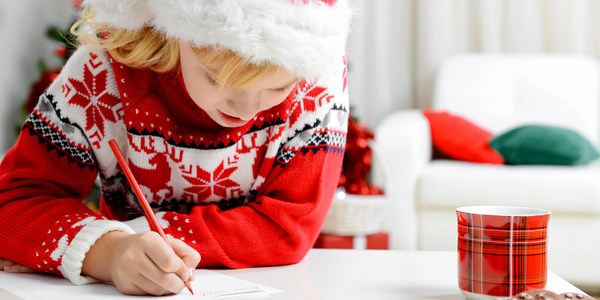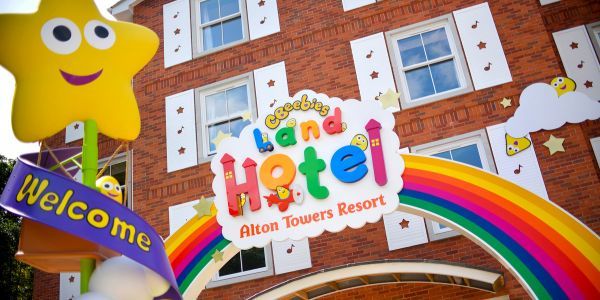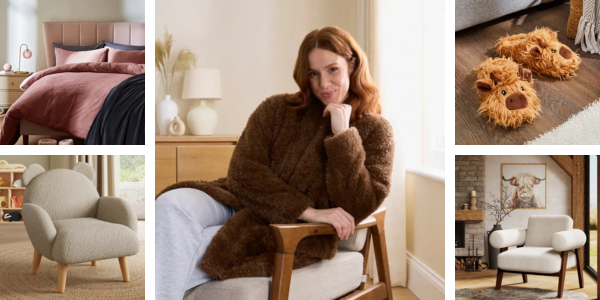

Protecting our environment has come to the forefront of public attention in recent years. As parents, it’s something we can all participate in.
In recent months, I’ve developed a huge interest in the environment, and how we can parent in the most environmentally responsible and sustainable way possible, the black bin being full of stinky nappies also being a motivating factor! Lots of the parents in our community have told me that they’re unsure where to start, or anxious about changing when they’re in a comfortable routine. Understandable, I felt the same way, but I feel that this is something really important to address!
The prospect of changing things up can be daunting, but there are so many easy swaps you can make during your parenting journey that will be kinder on our planet, protect your local ecosystem, and reduce the footprint you leave on this earth for future generations too.
In this guide, I’ll be exploring all the wonderful tips and substitutions that exist that are more friendly on the environment, and as as bonus may are kinder on your bank balance too!
We’ll be exploring;
- Eco-Friendly Baby Products
- Cloth nappies and wipes
- Biodegradable nappies and wipes
- Reusable sanitary products
- Wooden toys vs. plastic toys
- Buying eco-friendly baby and maternity clothing, or using charity shops more
- Use of ‘single use’ plastic
We aim to dispel misconceptions about how difficult it is to change your habits, and also show the amazing benefits of each of these eco-friendly parenting ideas, with recommendations on where to go to find everything from environmentally friendly toiletries and eco-friendly options for mum too.
So, here’s our BIG fat guide on protecting our planet as parents – we hope you find it informative!

Eco-friendly baby products
It’s easy to forget that what we use on our skin runs off into the ecosystem when we wash. If you want to help make a difference by reducing water pollution, choosing the right products for baby could make a difference. Chemicals such as Sodium Laurel Sulphate, parabens and phathlates, can be detrimental to fauna and our groundwater, so a great option is to pick products with no added nasties. This is why we’re huge fans of Fifi & Friends here at Bump, Baby & You!
About Fifi & Friends
“We merge the very best of nature and science and combine them with botanical extracts to formulate our UK-made products with modern benefits. Our products nourish, soothe and moisturize even the most sensitive skin and is suitable for newborns,” Fifi & Friends
Their ethos is to use the most ‘effective and natural ingredients possible and never include harsh ingredients’, which is great for sensitive baby skin and the environment. Their products are free from;
- Parabens
- Sulphates
- Synthetic colours
- Major allergens
- Silicones
Our Favourite Fifi & Friends Products
I’m a huge fan of Fifi & Friends, and use their products with my Max. They’re incredibly gentle on his sensitive skin, and the most rich and deeply nourishing products I’ve tried with him. The fact that they have no added nasties to pollute my lovely local eco system in the heart of The National Forest is so reassuring. It makes me feel like I am doing my bit for our planet each bathtime! Here are our top-rated products;
- Fifi & Friends Gentle Taming shampoo – This is cleansing yet super gentle.
- Fifi & Friends Gentle Taming Conditioner – We love this when Max has longer hair as his curls come out and are difficult to manage!
- Fifi & Friends Super Soft baby wash – This nasty-free wash is great for sensitive skin.
- Fifi & Friends Gentle Nourishing shampoo – This so gentle and is a tear-free formula, which I love.
- Fifi & Friends Gentle Nourishing conditioner – Aloe vera and avocado oil make this conditioner deeply nourishing.
- Fifi & Friends Gentle Swimmers shampoo – Got a water baby? This shampoo is perfect.
- Fifi & Friends Wipes – I love these wipes! They’re very high-quality, moist and full of lush aloe vera (and biodegradable organic cotton!).
- Fifi & Friends Daily Bottom Butter – This is great for warding off nappy rash & dry skin!
- Fifi & Friends travel Kit – For mummies on the go, this kit is extremely handy.
Cloth Nappies
Swapping from disposable nappies and wipes is an excellent way to be an environmentally-friendly parent, as well as saving yourself lots of money in the long run! Here we will look at our favourite brands, statistics and tackle misconceptions.
We asked the mummies in our Facebook community if they’d try cloth nappies and wipes, and a staggering 60% told us they weren’t keen to because;
- They’re worried about the cost.
- They’re worried about hygiene.
- They’re worried about leaking.
We’ve addressed these concerns below with a wonderful list sent to us by the team at Baba + Boo… keep on scrolling!
There are many amazing cloth nappy brands to choose from; Ecopipo, Baba + Boo and Little Lamb are brands we’d wholeheartedly recommend for mummies wanting to try cloth nappies & wipes!
Here’s our breakdown of each brand and why they’re such ace choices for environmentally minded parents.
Ecopipo
Ecopipo is ‘committed to the environment’s wellbeing and aims to be a socially responsible enterprise’. Ecopipo has worked to employ staff who come from textile communities in Mexico struggling for employment & immigration to the US is very high, which has had huge benefits for these communities, and they’re paid well above the Mexican national average income wage. Over 300 families benefit from their employment by Ecopipo.
You can read Ecopipo’s blog post ‘Are Cloth Nappies Greener, Healthier And Cheaper?’ here!
Here’s their guide on how many nappies you need to cloth bum full time!

Baba + Boo
Baba + Boo is a ‘planet friendly baby store’, which specialises in cloth nappies. Their nappies are fabulously high quality, and come in eye popping colours to make that wee cloth bum stand out from the crowd! In particular, we love their starter sets; they’re great for cloth bum mums just getting started, and for gifting too. Shop the range here!

Reusable nappy myths busted
Jane Shaw from Baba + Boo sent us this handy list of 10 myths that shouldn’t put you off reusable nappies;
It’s all or nothing. Just because you choose to reuse, it doesn’t mean that a disposable nappy must never cross your threshold again. You’re not comfortable using reusables when you’re out? Then it’s fine to use a disposable. You’re upstairs and the reusables are downstairs? Just grab a ’sposie. Using just one reusable a day stops around 900 nappies from being thrown away – every little bit makes a difference and there’s no rule that says you must exclusively cloth bum.
Getting started is too expensive. A quick peek at the cost of a new set of 20 nappies can make your eyes water. But getting started with reusables doesn’t have to be painful. You can buy one or two at a time and build up your set gradually. If you’re switching from disposables, you will quickly notice that you’re buying fewer disposables each month and you can use those savings to fund your next reusable. Friends and family love to gift nappies for baby showers and birthdays (modern nappies are seriously cute), and buying pre-loved nappies can cost less than a pack of disposables. It’s also worth reminding yourself that using reusables for two children – or selling them on when you’re done – can easily save you £1,000 compared to using single use nappies. Which suddenly makes that initial outlay much more bearable.
They’re too much hassle. Reusables aren’t more work – they’re just different work. Using washable nappies full-time adds about two extra loads of washing a week. Which might sound a lot if you’ve not got children. When little one arrives? It’s sounds more like a drop in the ocean. The trade-off for the extra couple of washes is no more late night dashes to the supermarket when you run out of nappies, no more emptying stinky nappy bins every day, and no more maggots in the overflowing outside bin in the heat of summer.
The extra washing means they’re not much better for the environment. Washing reusables uses about ten times LESS water than manufacturing single use nappies. Single use nappies are made of plastic and wood pulp. Manufacturing them is water intensive – and the waste water is polluted with industrial toxins, which are far worse than anything in your washing powder. Washing nappies is far better for the environment than manufacturing disposables.
Putting poo in your washing machine is gross. This is the deal breaker for lots of parents. Reality is, fortunately, a lot more palatable than myth. First things first – most of the poo gets knocked off the nappy into the loo. (Which, let’s face it, is a far better place for poo than the bin.) Anything that’s left on the nappy gets cleaned in the washing machine. If you’re still a bit grossed out, it’s worth remembering that nurses wash their own uniforms and farmers wash their overalls. All human underwear – adults included – includes traces of faeces after it’s been worn…and it all comes out clean. If washing nappies really was bleurgh, then someone – the single use nappy manufacturers, the public health authorities, or certain sections of the media – would have pointed it out by now.
You can’t use cloth with twins. Twins are hard. Double the feeds, double the sleep deprivation, double the clothes washing…but not double the nappy washing. Washing for two doesn’t need to be any more frequent than washing for one, depending on the size of your machine and how many reusable nappies you own. There are plenty of reasons why cloth bumming two is a bonus. You’ll need 30-40 nappies instead of 10,000. You’ll double the amount you save (enough for an extra month of parental leave). And you won’t have a supermarket trolley so full of nappies that you can’t fit anything else in it.
Childcare won’t use them. Most childcare providers are happy to use reusable nappies. Some actively encourage it, offering discounts to cloth bum parents because of the waste disposal costs they save. Even if your childcare provider is one of the few that’s unwilling to use reusables, there’s no reason why you can’t use cloth at home and reusables at childcare.
They leak. Well, it’s not unheard of – but a well-fitted reusable nappy will leak less than a single use nappy. Especially when it comes to poo. The elastic at the back of a reusable nappy means that up-the-back poo-namis are virtually unknown in reusables.
They use pins. Take a peek at a stash shot of modern cloth nappies (it’s a thing) and there won’t be a safety pin or plastic pants in sight. Cute seasonal designs that match the latest clothing range? Yup. Easy to fit all-in-ones with poppers or velcro? Yup. Pins and plastic pants? Definitely not. Nappies in the 21st century are as stylish as the hottest clothing ranges – new print launches are eagerly awaited and can sell out within days; hashtags like #fluffyfriday and #fluffylove abound; and the first time your little one chooses her favourite nappy at change time is a ridiculously lovely moment.
It’s not worth starting with a toddler. If your little one is six months from potty training, you can easily save 1,000 nappies from being thrown away. Even if you’re not planning any more children, the switch can work financially when you choose nappies with a great resale value or buy pre-loved. And you could make potty training a whole lot easier – there’s lots of anecdotal evidence that reusables make potty training easier. Which could quite possibly be the clincher.
Here’s their blog post on tackling misconceptions about reusable nappies & wipes!
Little Lamb
Another firm favourite with Team BBY is Little Lamb. They sell such a wide range of cotton, microfibre and wrap nappies, and loads of different bundles to help set you up for cloth bum heaven (and don’t get me started on the absolutely adorable prints!).
This ‘Baby Shower Full Time Bundle’ is a great way to get started with everything you need, or the perfect gift for an environmentally conscious mama to be. This bundle contains;
5 x bamboo nappies.
2 x standard cotton nappies.
2 x bombproof wraps.
5 x OneSize nappies.
1 x mesh laundry bag.
1 x roll of nappy liners.
10g Violet’s Bottom Balm.
1 x pack of 10 bamboo boosters.
1 x pack of 10 bamboo breast pads.
1 x wicker hamper – handmade by Somerset craftswomen.
Wowzer! You can see this here!

Biodegradable Nappies
Reusables really not something you’d consider? Why not try biodegradable nappies then? Standard disposable nappies take a whopping 500 years to decompose and leech nasty chemicals into the groundwater, which isn’t nice for our ecosystems.
We’d 100% recommend Beaming Baby for any parent considering biodegradable nappies! They’ve won a Mother & Baby Bronze award, are certified organic and carbon neutral, and donate 10% of profits to charity. Beaming Baby disposable nappies contain 54% less added chemicals than standard nappies, and aim to be far more kind to sensitive new baby skin than standard nappies, so if your baby is prone to rashes and eczema, these could be the answer to all your problems. Beaming Baby guarantees that their nappies will not cause nappy rash, and if by seven days your baby does develop nappy rash, they will give you your money back.
They also sell biodegradable nappy sacks made from cornstarch, and biodegradable wipes – nappy sacks and standard wipes contribute to landfill and aren’t considered biodegradable, so this is another great way to be kinder to our planet.
Learn more about Beaming Baby’s free trial packs here.
Reusable Products For Mama…
Cloth Sanitary Products (CSP):
Like reusable nappies and wipes, these aren’t everyone’s cup of tea. However, like nappies, tampons and sanitary pads really aren’t kind to the environment. Think how many we use over a lifetime potentially; then multiply that by three billion. Yeah, that is a LOT of non-biodegradable waste! A great way to do your bit is to switch to reusable sanitary products. But where can we get them?!
Ecopipo have you covered, mama! They manufacture reusable sanitary pads and portable wet bags for soiled pads. You can choose from regular, and higher absorbency levels for postpartum bleeding and incontinence issues. And of course, their prints are just as jazzy as their cloth nappies! Shop the range here.
Reusable Bamboo Breast Pads:
If you’re breastfeeding, you’ll need breast pads to avoid any damp clothing! However, like sanitary towels, breast pads are not biodegradable and contain chemicals that may leech into the groundwater, which isn’t ideal. These reusable bamboo breast pads by Little Lamb are the perfect solution! For one small initial outlay cost, you’ll save bin space, money, and make a difference to the environment.

Ditch The Plastic & Choose Wooden Toys
Wooden toys have enjoyed a huge resurgence in popularity recently, which is great because they’re far more environmentally friendly than their plastic equivalents. Recent studies have also warned against the use of some plastic toys due to worrying toxin levels – you can read more here.

By phasing out plastic toys if you’re already overrun by plastic and replacing toys with wooden (as well as recycling said plastic toys), you’ll make a big difference in terms of reducing landfill, reducing chemicals leeched into the ground water, and you’ll save money if you have another baby as wooden toys tend to live much longer and do well as hand-me-downs.
Read our blog on our favourite wooden toys here!
An Eco Approach to Baby and Maternity Clothing
We live in an age of ‘throw away fashion’, which has a detrimental impact on our environment that’s often overlooked. The textiles industry contributes to water pollution through the use of hazardous chemicals during the manufacturing process, and a large amount of textile waste due to the rapid changes in fashion and tastes that has come with modern living.
A really great way to make a difference to the environment as a parent is to reevaluate your clothes shopping habits. Our best tips are;
- Pick quality over quantity.
- Create a capsule wardrobe with classic styles that won’t go out of fashion.
- Try charity shops first before buying new – you’ll be surprised what gems you can find, especially with baby clothes.
- Use clothes recycling banks when disposing of clothes instead of sending to landfill.
- Pick natural fibres rather than synthetic.
- Try to favour brands with an eco-friendly ethos.
Eco-Friendly Fashion
We Love Frugi focuses on sustainability and putting the planet first, so naturally they’re the perfect brand to mention. You’re spoilt for choice when looking at their clothing range, and they’re a great choice for mummies and daddies who want to be mindful of our planet.
We Love Frugi
Frugi gives 1% of its profitable turnover to charity, sources all organic cotton from sustainable sources, and creates their outerwear from recycled plastic bottles – how amazing is this?! They’re clearly very dedicated to making a difference, and their prints are so eyemcatching & unique.
This Snuggle Suit has to be one of my favourite pieces from their website! The puffin print is absolutely adorable, and the suit is designed to be snug, secure and protective against the cold whilst being made from the best sustainable, organic cotton. You can see it here!
You can find out more about Frugi and their Organic September campaign in the awesome video below…
Reduce Your Use Of Single Use Plastic…
Have you seen the BBC documentary ‘Drowning In Plastic‘? If not, you should. We are quite literally drowning in plastic, and this documentary is both shocking and enlightening. We want our babies to inherit a world that is safe, beautiful and healthy for them, and the use of single use plastic is genuinely causing huge environmental issues.
What is single use plastic? Examples include;
- Drinking straws
- Plastic drink bottles
- Plastic packaging
- Expanded polystyrene
- Cling film
If it’s recyclable, get that straight into your recycling bin, guys! If it isn’t, unfortunately it will be sent to landfill, which is why it’s vital to avoid where you can. If you’ve inadvertently ended up with some plastic that cannot be recycled, get creative! Lots of mummies and daddies use this for arts and crafts materials with their little ones, which is pretty clever. We’ve cut down on single use plastic usage by;
- Investing in some steel straws, as Max loves milkshake but plastic straws are awful for our marine ecosystems.
- Using glass and steel flasks to take drinks out and about.
- Doing arts and crafts with any plastic we do end up with.
- We’re trying to use paper bags for fruit and veg at the supermarket where possible.
- We’re looking to start using glass canisters when purchasing rice, beans and pulses, rather than purchasing them in plastic wrapping.
- Avoiding microplastics that infiltrate ecosystems such as glitter (bloody stuff is a nightmare!), and microbeads that are put into some exfoliators.
Craft Ideas With Plastic
We love this list of 56 Best Plastic Bottle Craft Ideas For Kids by Camp Live Oak! There are many wonderful ideas for activities that will help you make the most of waste plastic and have hours of fun with your wee ones.
You can see this epic Jet Pack tutorial by Doodlecraft Blog here!
To round it all up…
No matter your background, finances, lifestyle, there is always something you can tweak to make your life and your parenting kinder on our planet. Every little helps. It doesn’t have to be difficult, or strenuous, or even boring. As you can see, there are so many fun and interesting changes that you can make to ensure our babies inherit a healthier planet from our generation.
Do you have anything to add to our article? How do you look after our planet as a parent? Tell us in the comments!
Love from Katie! Xx

Shopping
Grab a BARGAIN in the Dunelm Sale!
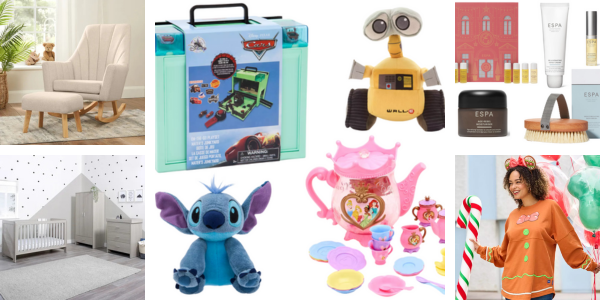
Shopping
Black Friday Bargains!
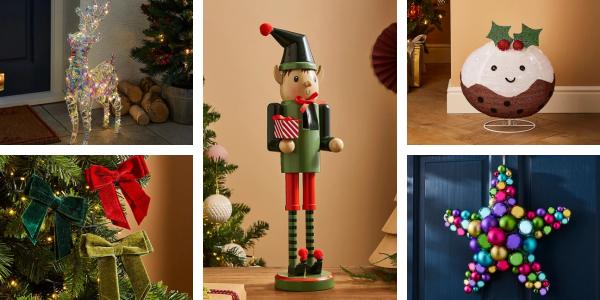







.png)
